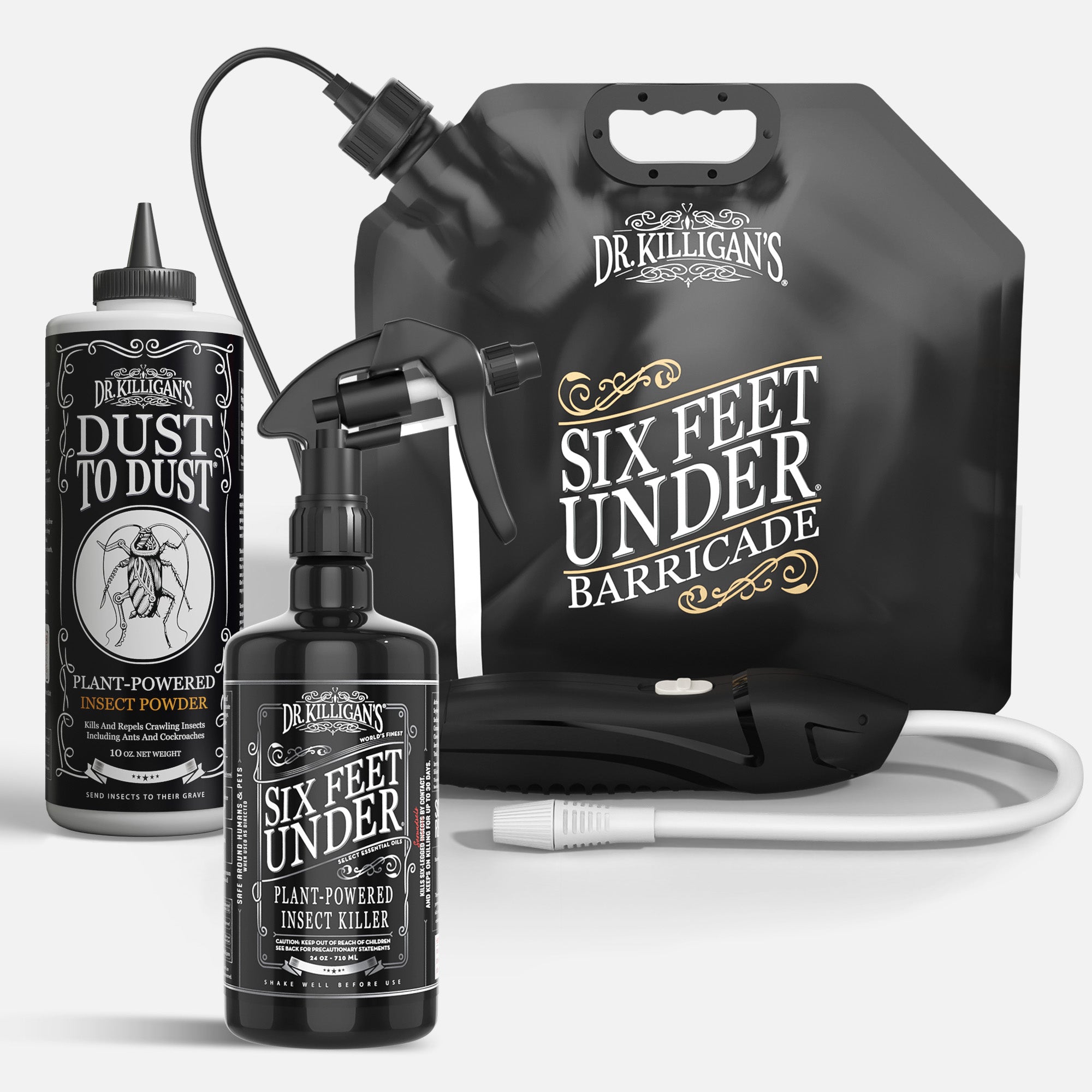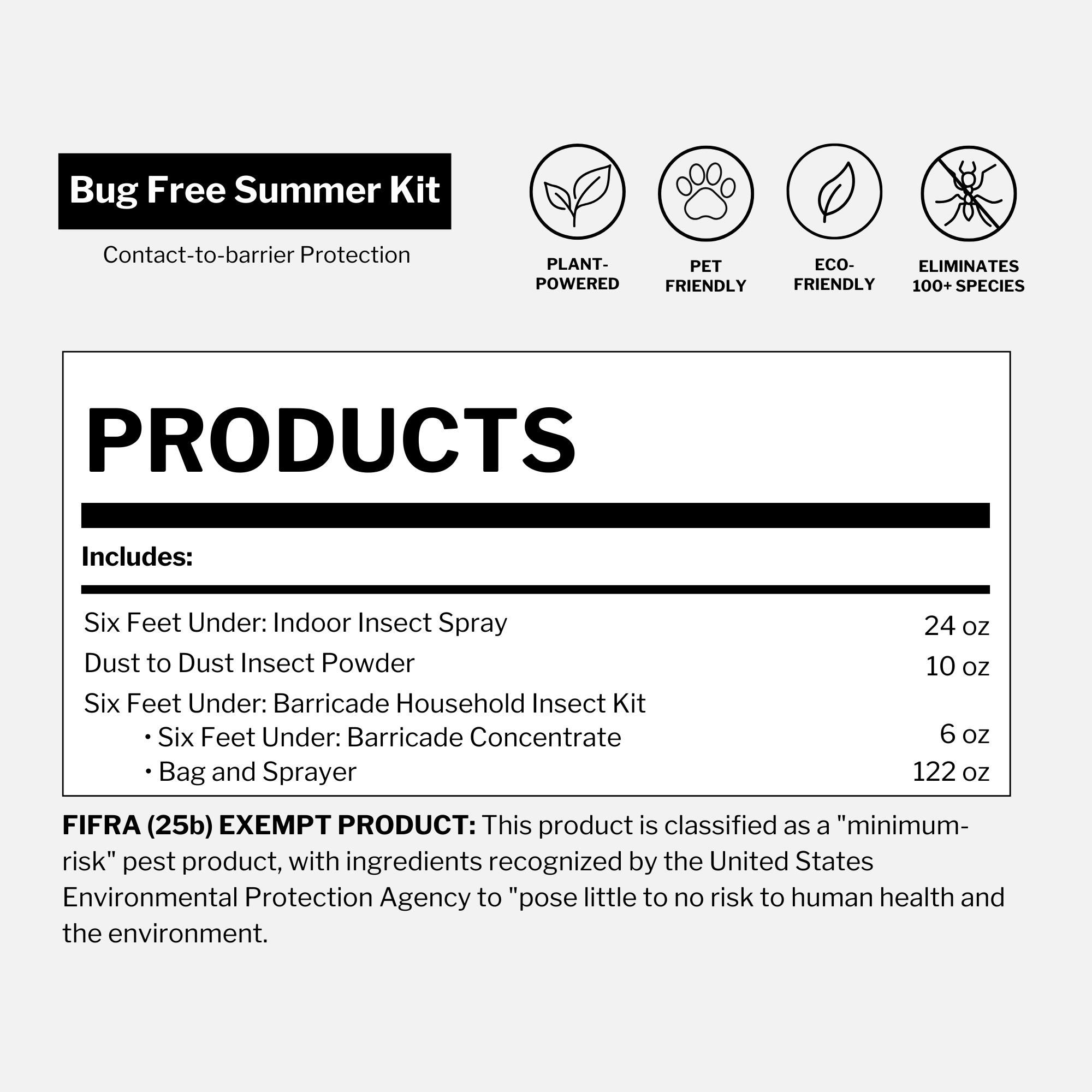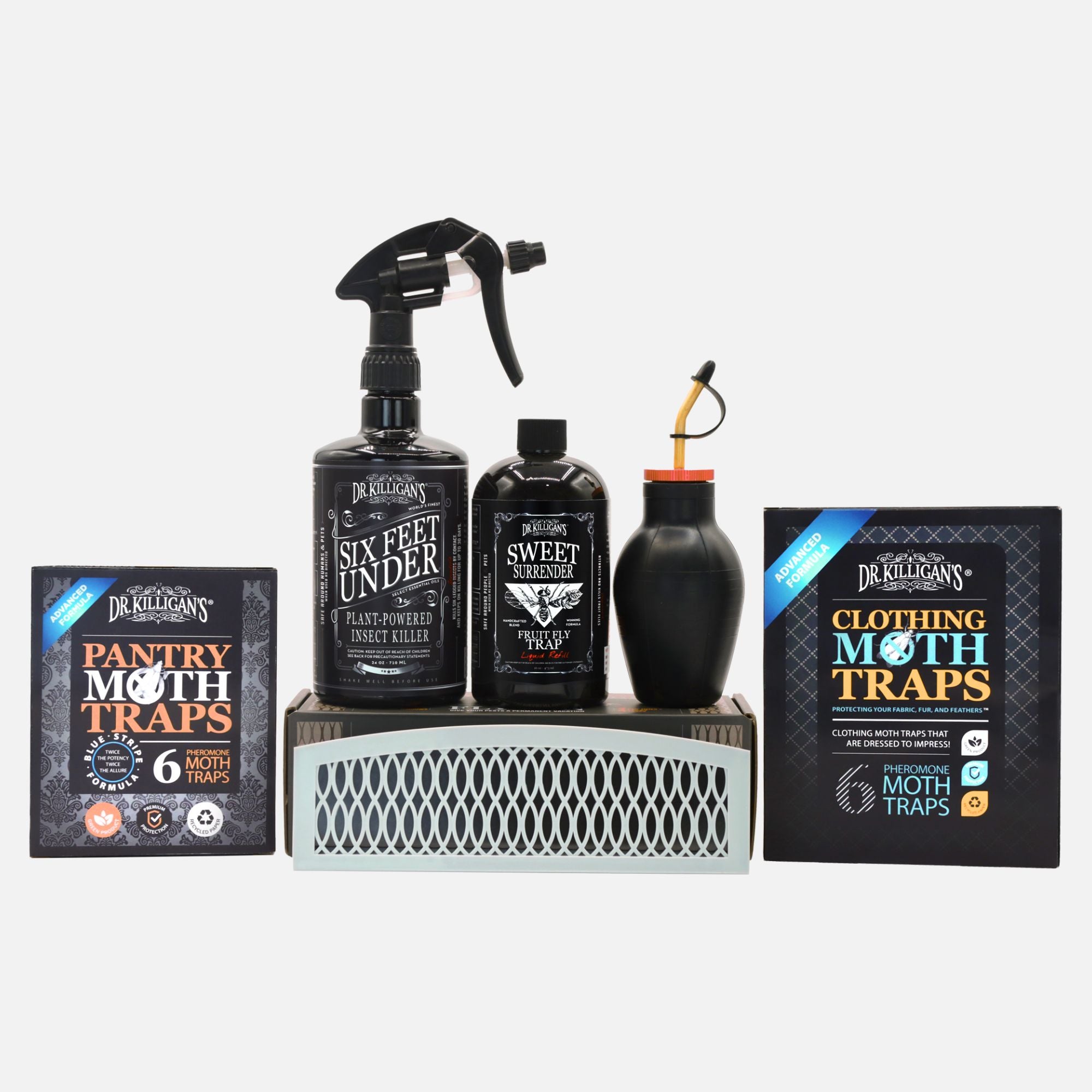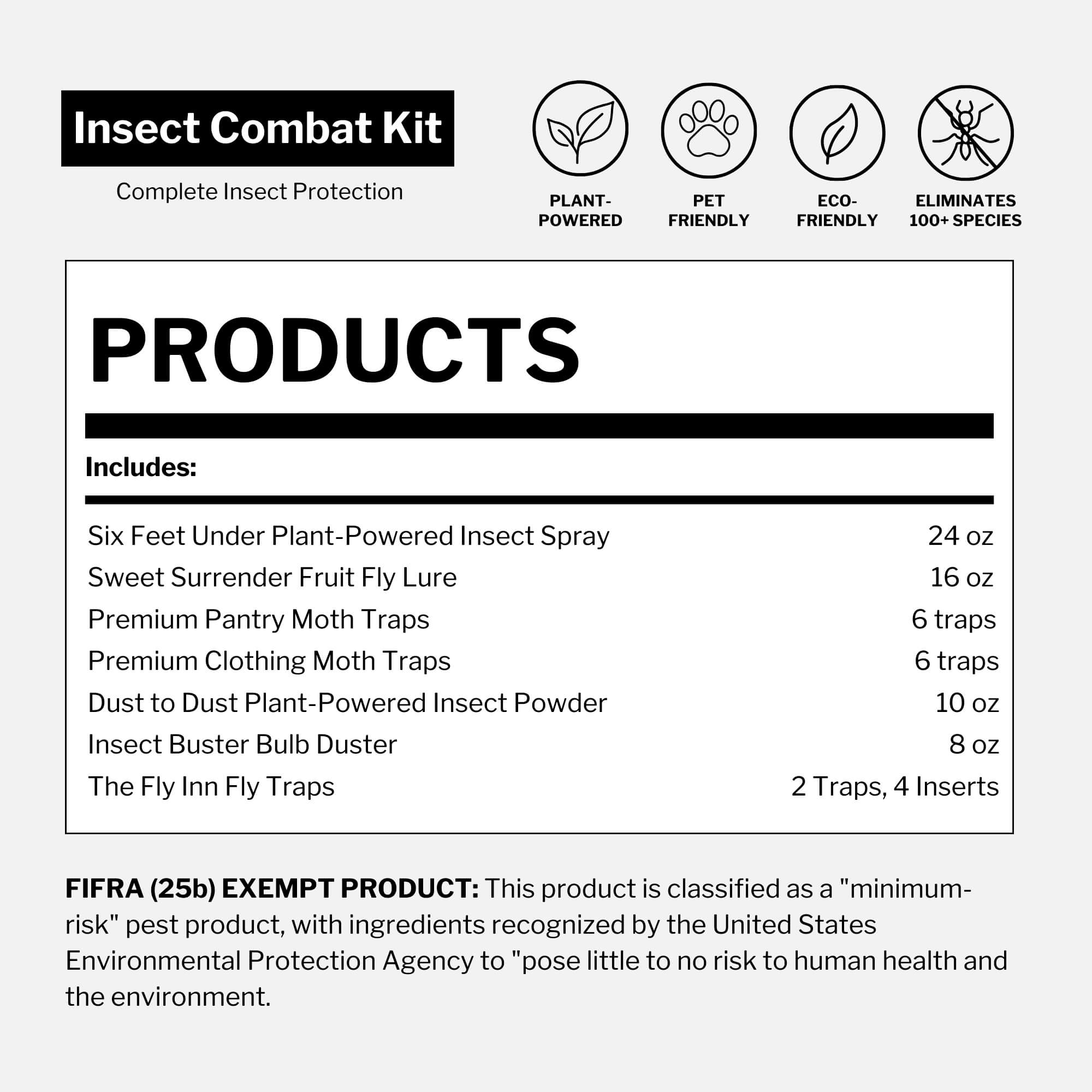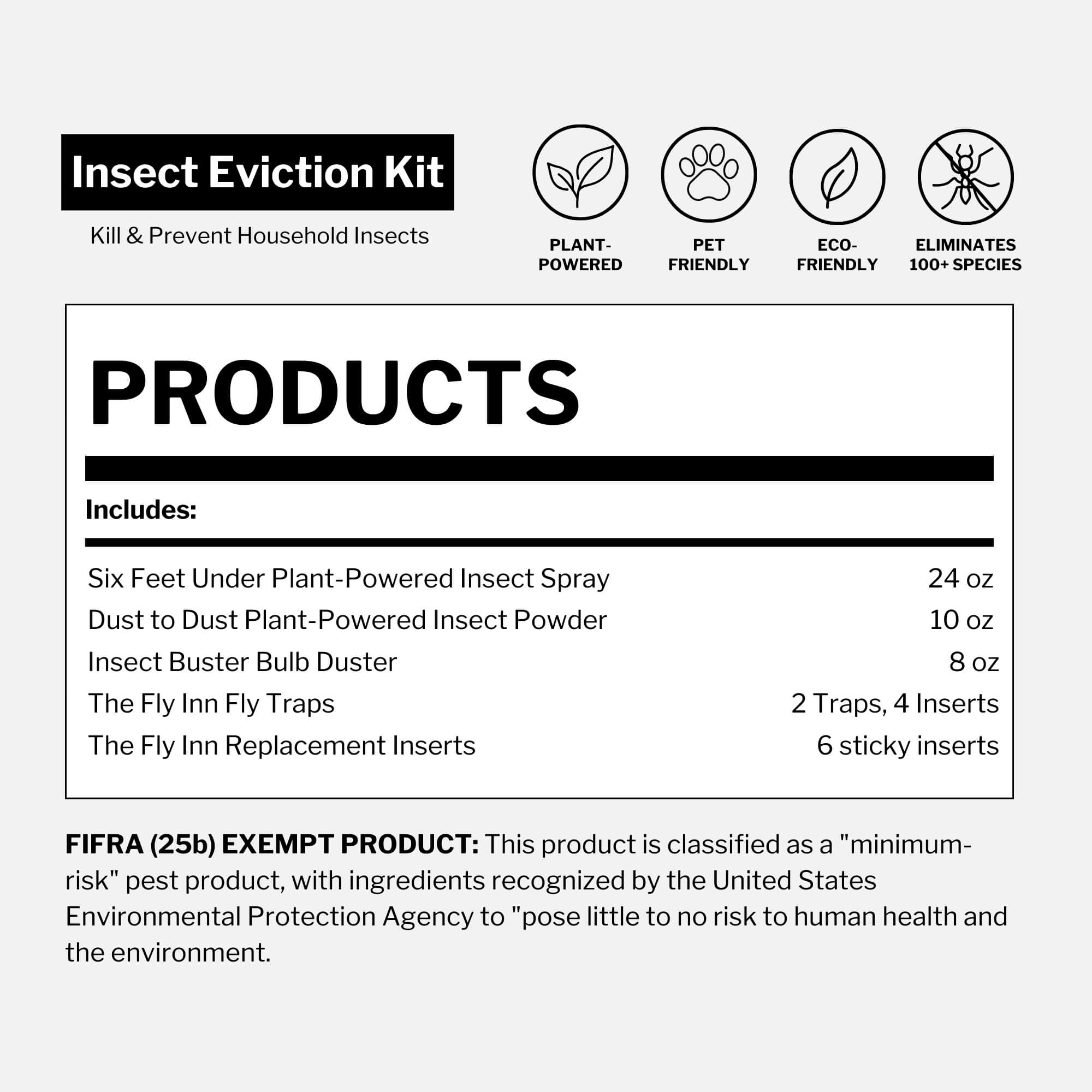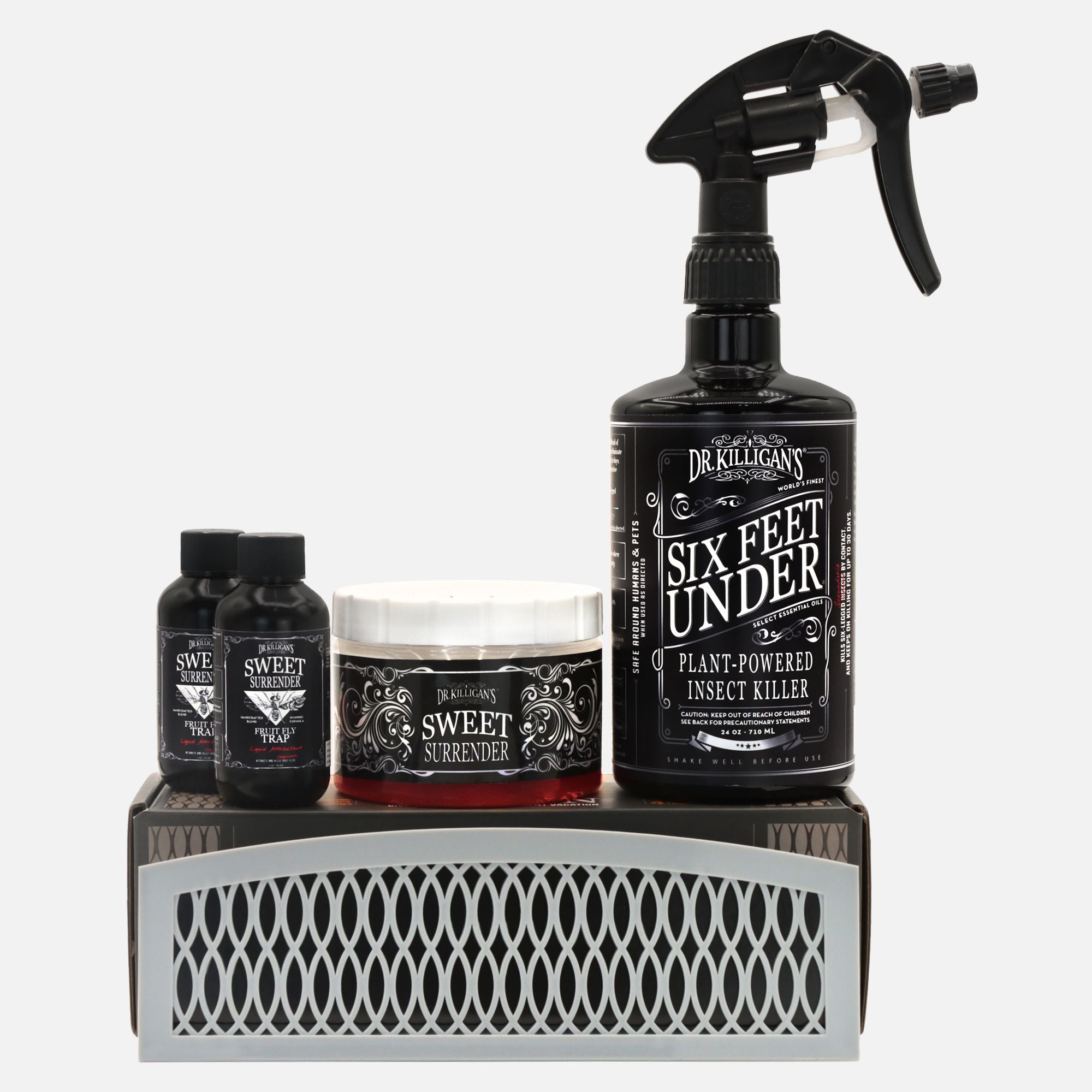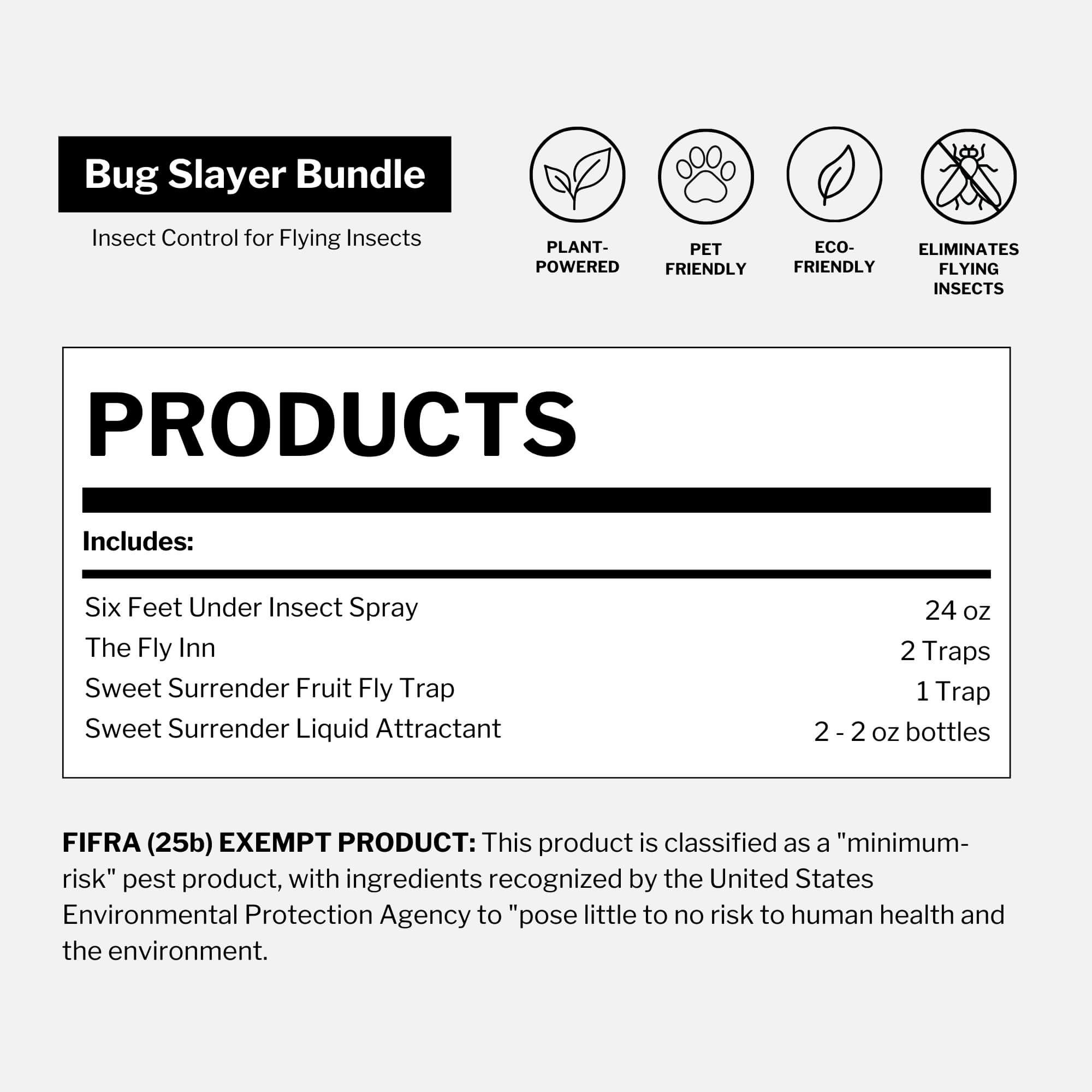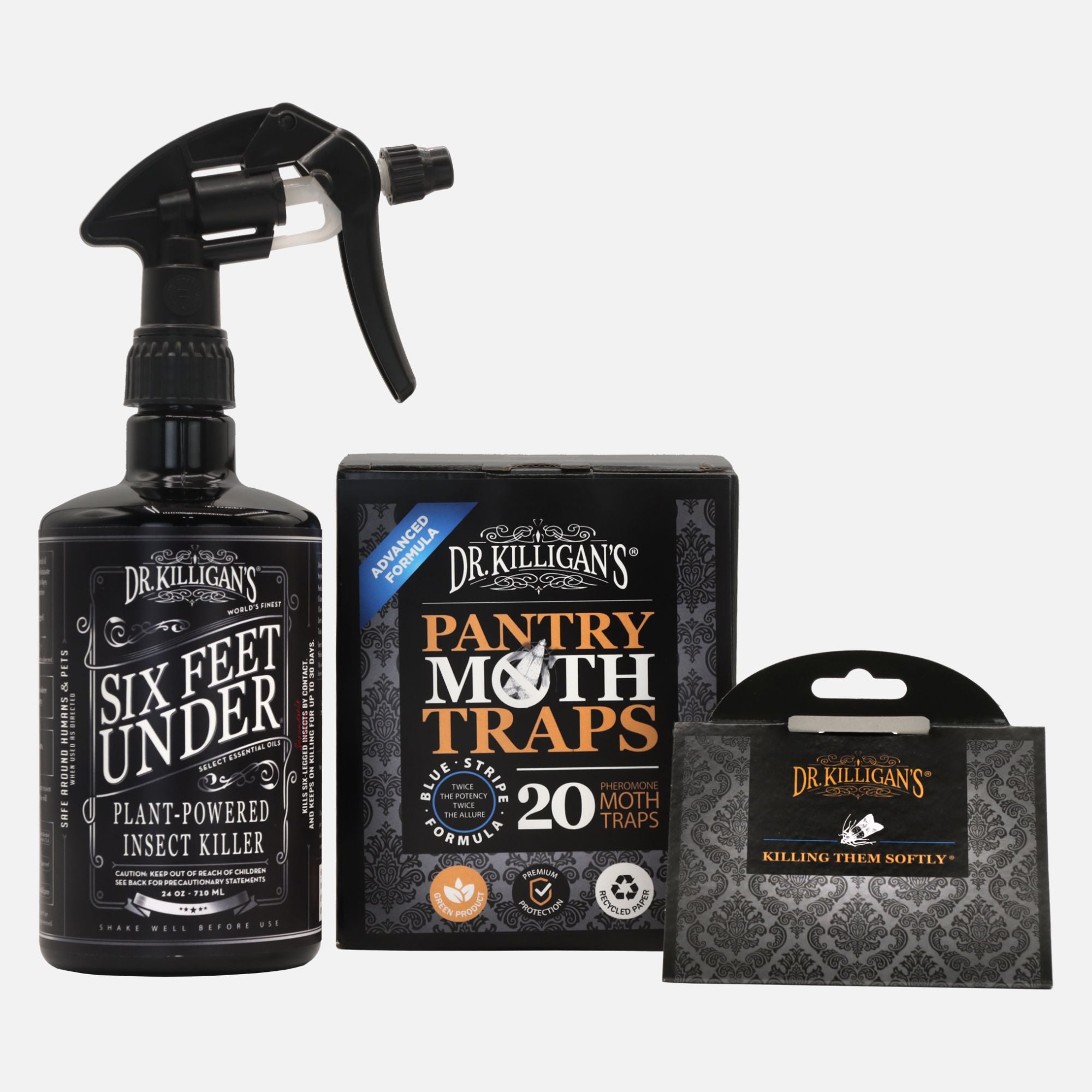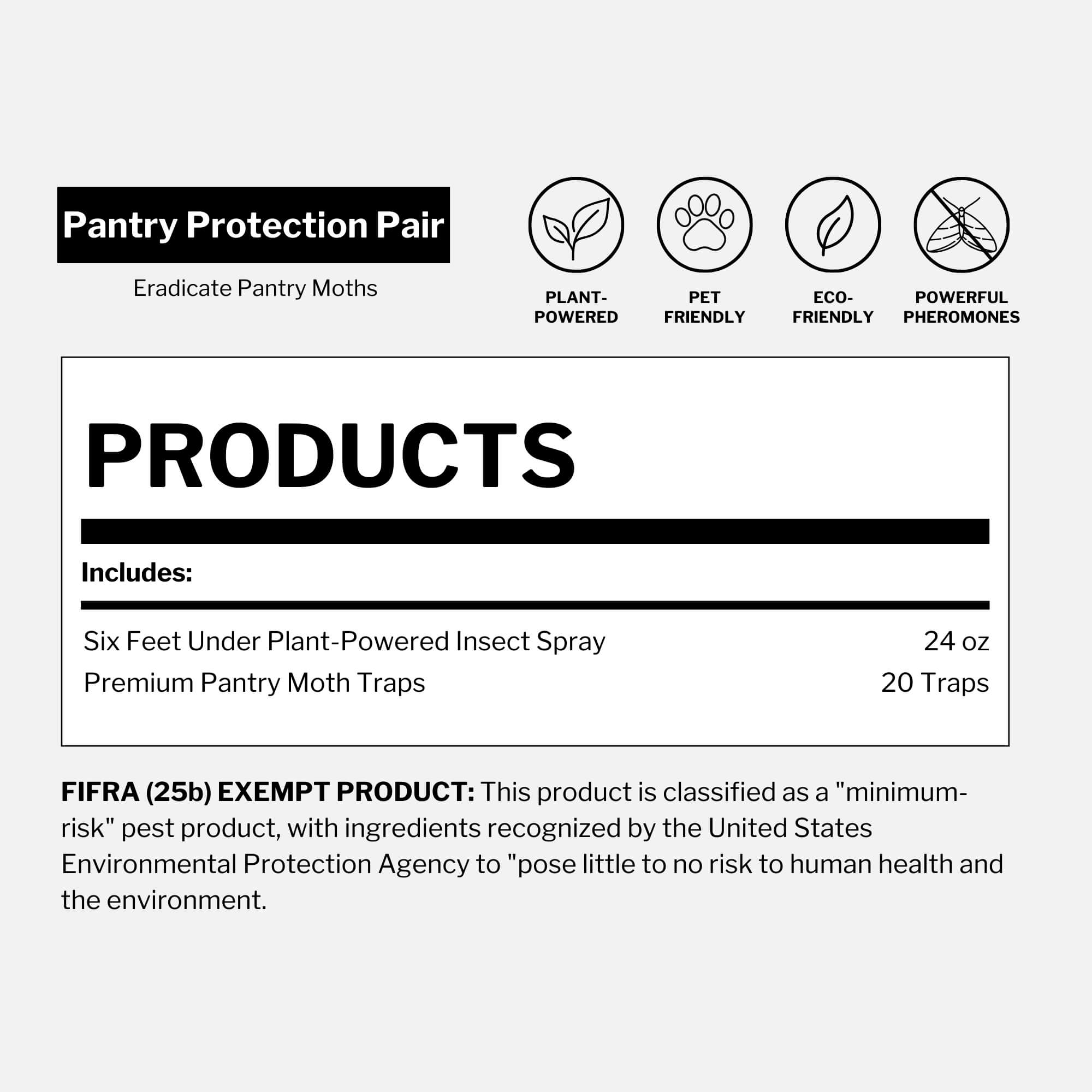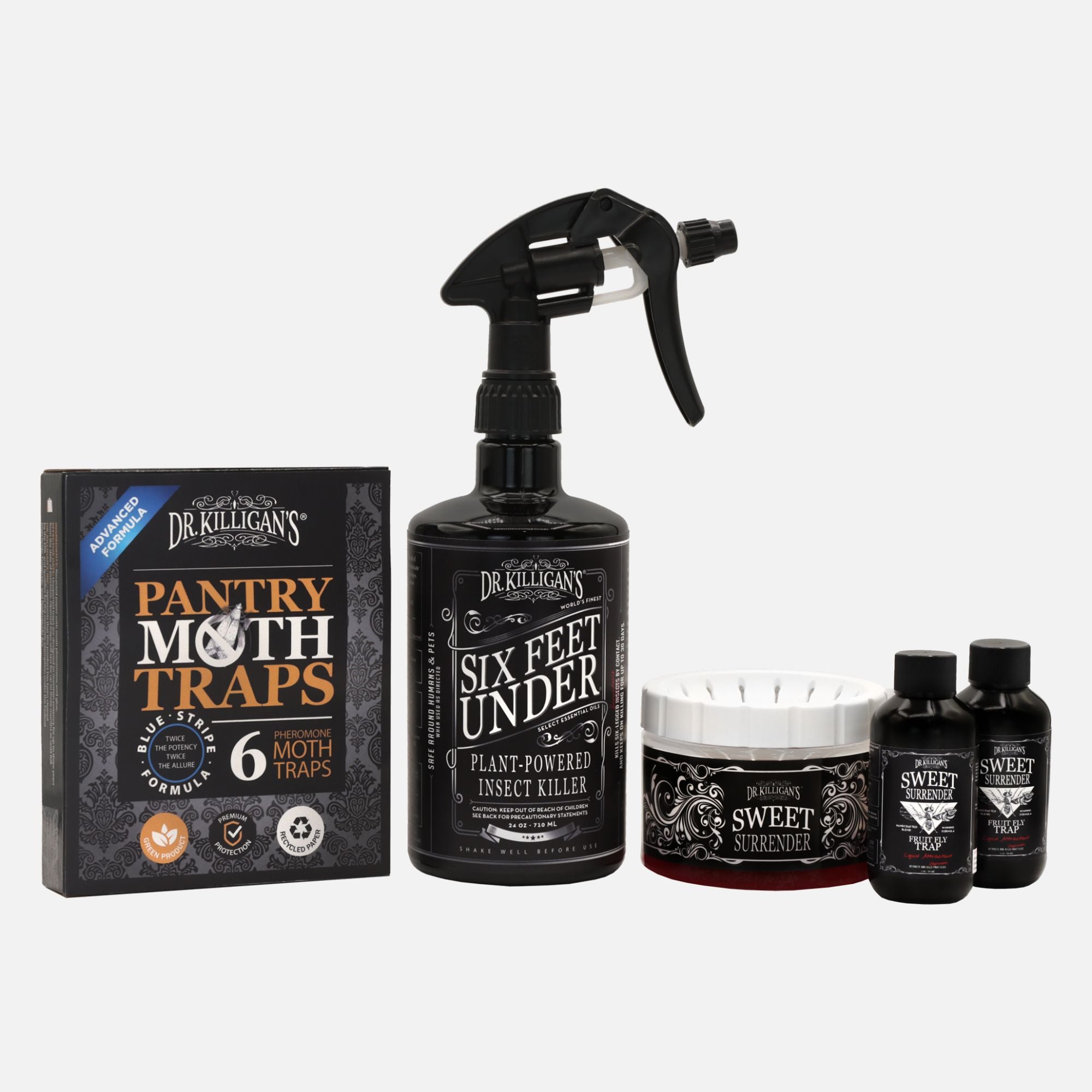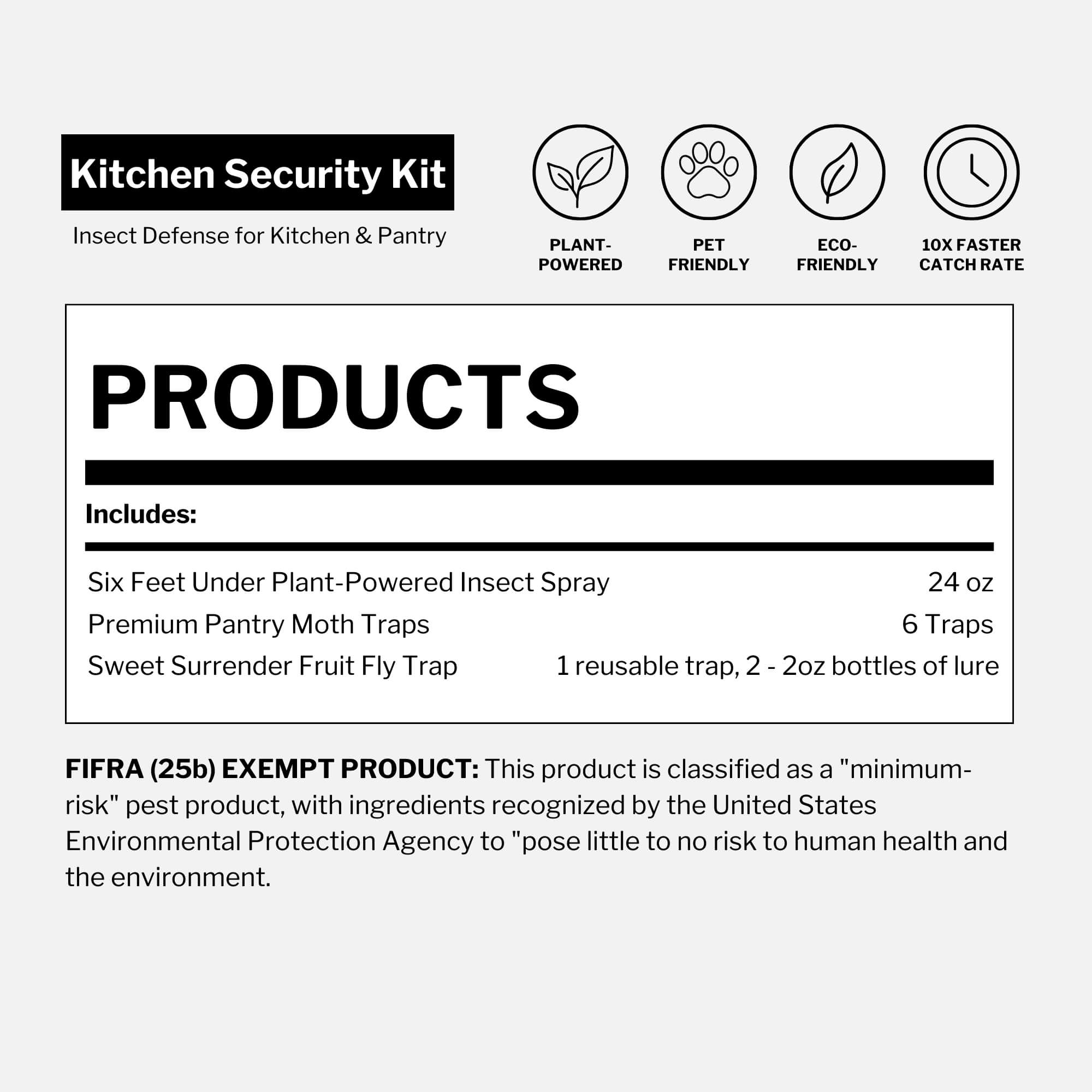Updated on May 17th, 2025
This article has been updated to include a detailed comparison table for easier reference.
Though they may look similar from a distance, pantry moths and clothes moths are very different, as are their paths of destruction. Without knowing the difference, you could spend a short eternity trying to eliminate one species—while another is quietly multiplying right under your nose.
Moths in the house can arrive in unexpected ways. A clothes moth might hitch a ride on your favorite green second-hand cashmere sweater or gorgeous leather couch—from a consignment store, while a pantry moth could stow away in a bag of your dog's dry food mix or box of cereal.
Clothes moths vs pantry moths: No matter which one you're dealing with, both species...
- Are a nuisance.
- Wreak havoc in your space.
- Demand swift elimination.
What is a pantry moth?
The pantry moth—also known as the Indian Meal Moth (Plodia interpunctella)—is the most common household pantry pest in the United States. These moths are often the culprit when people notice moths in the house—especially near dry food storage.
What does a pantry moth look like?
Also known as the grain moth, weevil moth or flour moth, this pest is about half an inch long. Its forewings are whitish-gray near the body and dark reddish-brown at the tips. Pantry moths fly in an erratic, zigzag pattern, which helps distinguish them from clothes moths.
Tip: Pantry moths are not known to carry diseases and ingesting one—or its larvae—will not make you sick, though it's certainly unpleasant.

Pantry moths are often found indoors—in kitchens, grocery stores, food packaging areas and storage facilities—anywhere dry food is stored.
Do pantry moths eat clothes?
Unlike clothes moths, pantry moths do not eat clothes. If (or more likely when) you bring them into your home, they'll head straight for the pantry, as their larvae feed on dry goods. Favorite foods include rice, grains, flour, pasta, baking chocolate, cake mixes, dog food, birdseed, teas, herbs, spices, cereals, dried fruits and beans, seeds and nuts.
Pantry moth life cycle:
A pantry moth’s entire life cycle can range from one month to over ten months, depending on temperature, food availability, and conditions. After mating, female pantry moths lay their eggs near food sources. The tiny, cream-colored larvae hatch and begin feeding—contaminating food with silk webbing, fecal pellets, cast skins, and eggshells.
Once they’ve matured, the larvae leave the food source to pupate. They may crawl into a crevice, under a container lid or along a pantry shelf to spin a cocoon. Within weeks, adult moths emerge—ready to reproduce and continue the cycle.
Note: Adult pantry moths do not feed.
What is a clothing moth?
The two most common types of clothes moths in North America are the webbing clothes moth (Tineola bisselliella) and the casemaking clothes moth (Tinea pellionella). These clothing pests are notorious for damaging natural fibers—and unlike pantry moths, they do eat clothes.
What do clothes moths look like?
Adult webbing moths are golden to yellowish-gray in color, with reddish-gold to coppery hairs on their heads. Their larvae, about one-third to one-half inch long, look like little caterpillars and are creamy-white with dark-colored small heads.

The adult casemaking moth is similar in size and color but has spotted, brownish wings and lighter gold hairs on its head. Its larvae are distinct: they construct and carry a cigar-shaped, open-ended silken case, which they drag with them and retreat into when disturbed. These larvae also resemble wriggling rice grains and are yellowish with brown heads.
Do clothes moths eat clothes?
Yes—clothes moth larvae are the actual fabric destroyers. They feed on natural animal-based fibers like wool, fur, feathers, silk, felt and leather, which contain keratin—a protein they can digest. Clothes moths will also attack household items such as:
- Hair, nails, piano felts and bristle brushes
- Rugs, carpets, blankets and upholstered furniture
- Even cotton, linen or synthetic fibers if soiled with sweat, oil, urine or food spills
Clothing moth life cycle:
A clothes moth’s life cycle typically lasts 65 to 90 days, but can vary. After mating, the female deposits 40 to 50 eggs on a keratin-rich surface—often a favorite wool garment or blanket. These eggs hatch into larvae with a ravenous appetite. As they feed, the larvae grow rapidly, often continuing for weeks before pupating.
When ready, each larva spins a silken cocoon—sometimes sealed with fabric fibers and droppings—where it transforms into an adult moth. Once emerged, the cycle begins again.
Pantry moth vs clothes moth: How to tell them apart
Knowing the difference between pantry moths and clothes moths is crucial for choosing the right solution—especially if you're finding moths in your house but aren’t sure what kind.
| Characteristics | Pantry Moths | Clothing Moths |
|---|---|---|
| Scientific name | Plodia interpunctella (Indian meal moth) | Tineola bisselliella (Webbing clothes moth) and Tinea pellionella (Casemaking clothes moth) |
| Appearance | Approximately 0.5 inches long; forewings are whitish-gray near the body and reddish-brown at the tips. No hairs on the wings. | Small, about 0.25 inches long; golden or buff-colored. Wings are lined with hair along the edges. |
| Flight behavior | More active fliers that move in an erratic, zigzag pattern while searching for food. | Weak fliers that move in a direct pattern and only fly when necessary. |
| Light attraction | Strongly attracted to light, making them more visible in open areas. | Prefer dark spaces and avoid light. |
| Habitat | Found near stored food products in pantries, kitchens, grocery stores and food storage facilities. | Prefer dark, undisturbed areas such as closets, wardrobes and storage boxes containing natural fibers. |
| Diet | Larvae feed on grains, cereals, flour, pasta, dried fruits, nuts and other dry food products. | Larvae feed on keratin-rich materials like wool, silk, fur and feathers, and may also chew on clothing stained with food, sweat or oil. |
| Signs of infestation | Presence of larvae or webbing in food packages; adult moths flying in kitchens; infested food may clump together due to webbing. | Irregular holes in clothing or fabrics; silky webbing or cases on textiles; adult moths crawling on walls or in closets. |
| Life cycle | Life cycle ranges from 1 to 10 months, depending on environmental conditions; females lay eggs near food sources; larvae are the feeding stage. | Life cycle varies from 1 to 24 months; females lay eggs on suitable fabrics; larvae cause damage by feeding on fibers. |
| Control measures | Dispose of infested food items; clean and vacuum pantry shelves; store food in airtight containers; use pantry moth pheromone traps to capture adult moths. | Clean and vacuum infested areas; launder or dry clean affected clothing; store susceptible items in airtight containers; use clothes moth pheromone traps to monitor and reduce adult populations. |
For additional insight into key differences between these two moth species—and to learn which trap to use to get rid of pantry moths or eliminate clothing moths—read:
Tip: In homes with severe pantry moth infestations, moths will occasionally use nearby fabrics for egg laying. If a clothing storage area is located close to your pantry or food storage area, pantry moth webbing and larvae may be present. However, pantry moths do not consume fabric. If you find holes in clothing, you’re likely dealing with a clothing moth infestation.
Final word on the difference between pantry and clothing moths

By now, you should feel confident in spotting the difference between pantry moths and clothes moths—and knowing how to respond.
- If you have pantry moths, use Dr. Killigan’s Pantry Moth Traps.
- If you have clothing moths on your hands, buy Dr. Killigan’s Clothing Moth Traps.
- Not seeing any moths right now? It’s still a smart idea to keep traps on hand—or gift a set to a friend, neighbor, or coworker in need. Unopened, our traps remain effective for up to three years from the date of manufacture.
Tip: Dr. Killigan’s Six Feet Under is our plant-powered kill-on-contact spray that helps eliminate moth eggs and larvae on the spot.
Have questions about moth types or which product to use? Email our team, call us at 844-525-2779 or use our website chat. We’re truly happy to help.

